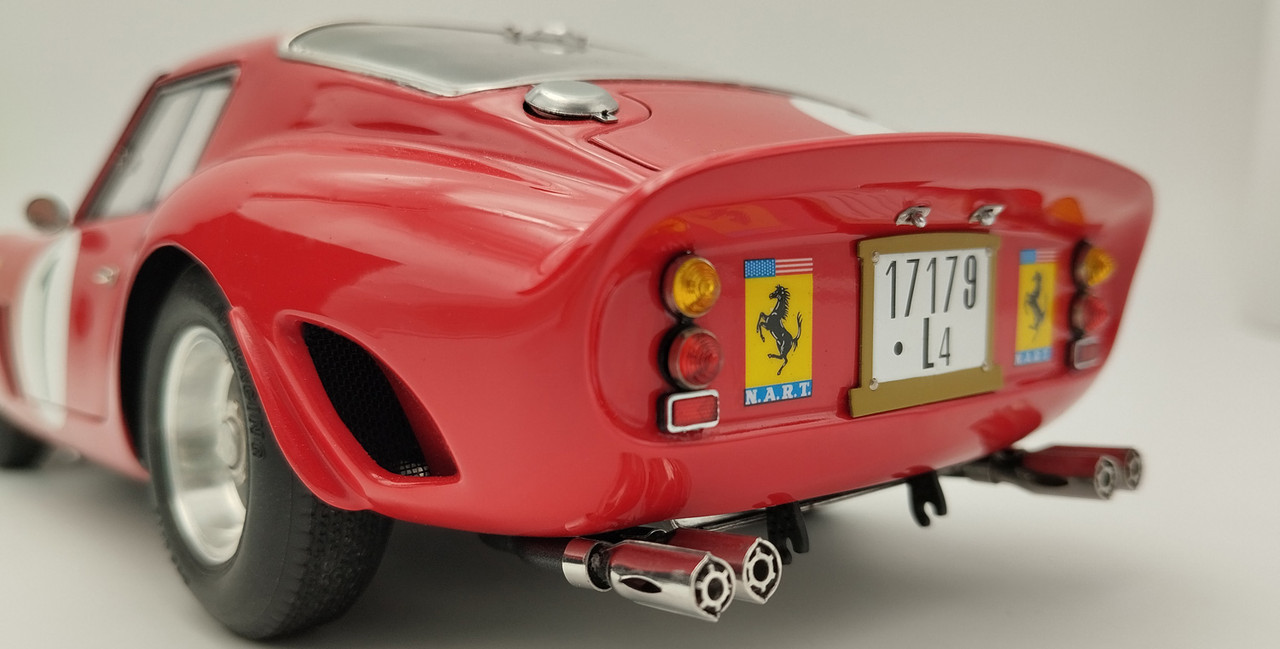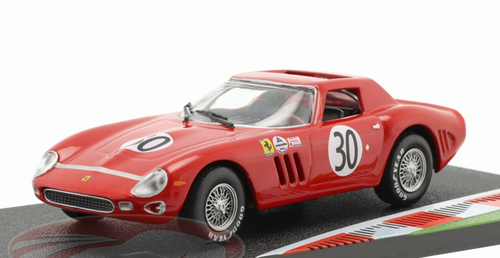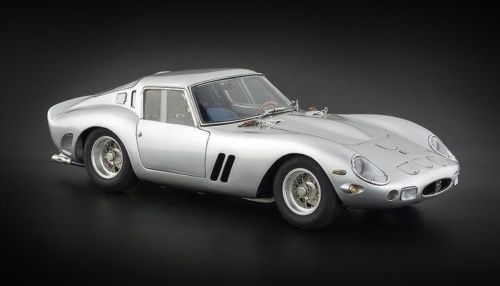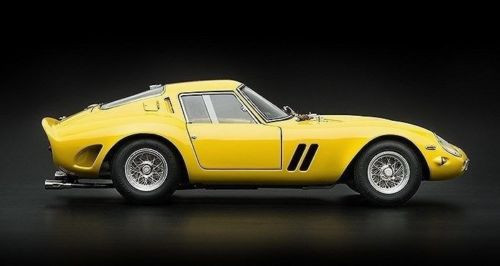Product Description
The Ferrari 250 GTO (Gran Turismo Omologato) grew out of the 250 GT series into a
competition car in the Gran Turismo category. A road-legal race car was born,
enabling the drivers to travel to their races on their own. The basis for the 250 GTO was the Ferrari 250 GT Berlinetta SWB model. The 250 stands for displacement in cubic centimeters per cylinder. Ferrari presented the vehicle for the first time at the annual press conference in January 1962 in Maranello.
The development of the GTO was conducted under Giotto Bizzarrini and took shape
at the coach-builder Scaglietti, where almost all GTOs were later built. What was
new in comparison with the 250 GT Berlinetta “SWB” was the completely
redesigned front end. The rear fenders got wider and longer, as did the rear
end. In contrast to the first prototype, all later examples received a riveted rear spoiler, which was an aerodynamic innovation at the time. So much effort had never been put into the aerodynamics of a GT racing car.
The rear rigid axle of the 250 GT Berlinetta “SWB” was retained, but mounted on
parallel trailing arms and a Watt linkage instead of leaf springs. The proven Tipo
168/62 3.0 L V12 from the 250 Testa Rossa was carried over. The interior of the 250
GTO is extremely spartan – an entailment resulting from its low weight, which, in conjunction with an output of virtually 300 hp and low air resistance, makes the GTO capable of up to 280 km/h.
The accolades of the 250 GTO were impressive, there were victories at the 12 Hours
of Sebring, the Targa-Florio, the 1000 km of Spa-Francorchamps and at Le Mans,
where they also finished second OA in 1962 and 1963 and won the GT classification.
Chassis #3987 was delivered to Luigi Chinetti of the NART Team (North American Racing Team) in October 1962. It contested in the 1000 km of Paris in Monthlery one week later with Pedro and Ricardo Rodriguez at its wheel. They raced chassis #3987 to a first place finish overall. In December of the same year, the car was sold to Roger Penske, who was able to continue its winning streak with many first-place finishes and front placements in various races. Among them was the 4th place overall and the class victory in the GT3
class at the 12 hours of Sebring in March 1963, a highlight worth mentioning.
After countless changes of ownership, the vehicle was restored to perfect condition as a part of Ralph Lauren’s prestigious collection in 1985.
Model Description:
• Hand-crafted metal precision model with a left-hand-drive configuration,
built from 1,838 single parts
• Authentic recreation of the Monthlery winner at 1000 Km of Paris 1962
• Functional engine hood, equipped with a supporting rod, quick release locks
and leather belt fastening
• Functional doors with sliding windows
• Trunk lid has a supporting rod and opens to reveal a spare wheel
• Rear fuel tank filler with a flip-open cover
• Perfectly-wired wheels with a light alloy rim, and removable Borrani central locking
nuts (with side-dependent right- and left-hand threads)
• Highly detailed 12-cylinder V-type engine, complete with all aggregates, pipes
and cabling
• Meticulous replication of the interior, with roll cage and safety belts
Seats upholstered in textile covers with leather trimmings
• Well-integrated dashboard with a full array of instruments and controls
• Elaborate undercarriage, front and rear suspensions, oil and fuel tank (all made of
stainless steel), and racing-style tailpipe of the exhaust system
• Detachable stainless-steel bottom plate
Special feature: Covers for the three air-intakes above the radiator grille are
removable and lockable.
Technical Data of the Original Vehicle:
• Chassis #3987
• Two-seater coupé body (Berlinetta) made of aluminum
• 12-cylinder V-engine with a 60° cylinder angle
• Bore x stroke: 73 x 58.8 mm
• Displacement: 2,953 cm³
• Maximum output: 300 hp at 7,500 rpm
• Top speed: Approx. 280 km/h
• Dry sump lubrication
• Brakes: Disk-brakes front/rear
• Wheelbase: 2,400 mm
• Track front/rear: 1,354 (1,351) / 1,350 (1,346) mm
• Vehicle length: 4,325 mm
• Vehicle width: 1,600 mm
• Vehicle height: 1,210 mm
• Construction period: 1962-1964
• Quantity produced: 36 cars

























